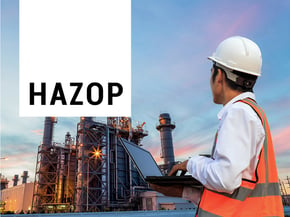When people think about process safety, they often focus on the plant, the equipment, the pipes, and the chemicals. But buildings like control rooms, workshops, and offices are just as critical, because they house your most valuable asset: your people.
That’s why Occupied Building Risk Assessments (OBRA) are a key risk management tool for high-hazard facilities. And one of the most powerful ways to inform these assessments is through a Quantitative Risk Assessment (QRA).
At Safety Solutions, we offer QRA-informed Occupied Building Risk Assessments to help facility operators answer a critical question:
Is your building actually in a safe place and designed to keep people protected if the worst happens?
What Makes a Building “Safe”? - Lessons from Real Events
Several major incidents have proven the devastating consequences of buildings being located too close to hazardous operations:
- Texas City (2005): Portable buildings placed near a blowdown drum were destroyed in an explosion, killing 15 and injuring 180 people.
- Flixborough (1974): A bypassed reactor exploded, destroying nearby buildings and killing 28.
- Hickson & Welch (1992) A jet fire from a leaking pipe engulfed a chemical plant, killing 5 workers and injuring several others. Fire damage spread rapidly, destroying key structures and prompting major emergency response efforts.
These events weren’t due to process failures alone; they were also failures to understand how buildings might be affected by major incidents. And that’s where QRA can make a difference.
Using QRA to Understand Building Risk
QRA provides a data-driven, scenario-based method for assessing risk across a facility. When applied to occupied buildings, it can answer critical questions such as:
- What’s the likelihood of a blast or toxic release reaching this building?
- What are the overpressure or thermal loads the building might experience?
- How do risks vary by location across the site?
- Which buildings are the highest priority for upgrade or relocation?
By quantifying both the likelihood and severity of process incidents, QRA enables targeted, risk-based decision-making about where buildings are placed and how they are designed.
This broader, facility-wide perspective means that instead of evaluating risks in isolation, QRA helps you understand how multiple hazards might interact and affect people in specific locations, particularly those inside occupied buildings.

|

|

|
| THIS online INTRODUCTION TO BOWTIES course is suitable for anyone who may use or develop bowties. |
Find out about our QUANTITATIVE RISK ASSESSMENT training course HERE! |
Our 2-day HAZOP LEADER course is IChemE approved, find out more HERE! |
From Insight to Action: How OBRA Informs Decision Making
When you use Occupied Building Risk Assessment, you gain insight that enables smart, proactive safety decisions throughout the lifecycle of a facility:
- Site planning: Identify the safest areas to locate new buildings
- Design upgrades: Determine where blast resistance or HVAC isolation is needed
- Evacuation and occupancy: Limit occupancy or duration of stay in higher-risk buildings
- Regulatory confidence: Demonstrate that you’ve considered all reasonably practicable risk reduction measures
Why This Matters Now
As facilities evolve, adding new units, expanding boundaries, or adapting to changing regulations, it’s critical to ensure that buildings don’t become the weak link in your safety system.
QRA allows you to view building risk in context, not isolation. It's a tool to understand how one structure fits into the broader facility risk profile and whether that structure is contributing to or mitigating potential harm.
How Safety Solutions Can Help
Our QRA-informed Occupied Building Risk Assessment (OBRA) service delivers a robust, industry-aligned approach to managing risk. Built on recognised methodologies and aligned with guidance from the American Petroleum Institute (API) and the UK’s Chemical Industries Association (CIA), our OBRA service provides:
- A clear understanding of real-world risks to personnel in occupied buildings
- Location-specific insights into potential vulnerabilities
- Actionable, best-practice recommendations aligned with ALARP principles
Whether you're evaluating the siting of a new building, seeking confidence in regulatory compliance, or applying lessons learned from past incidents, our QRA-informed OBRA gives you the clarity and assurance needed to make informed, safety-first decisions.
Ready to take your process safety strategy to the next level?
Quantify incident frequencies and consequences with confidence. Contact us about Quantitative Risk Assessment training course.Visualise potential incident outcomes to strengthen decision-making. Contact us about Consequence Modelling Services.
Have questions or need guidance? GET IN TOUCH. We're here to help.